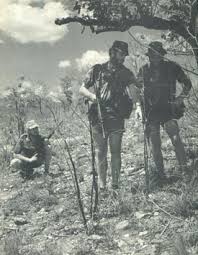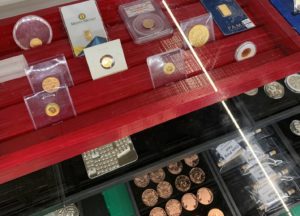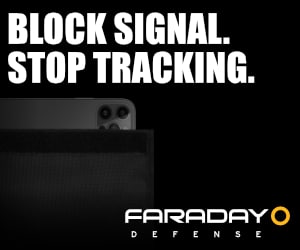In the previous article, we dealt with an overview of the spreading of the art of Tracking during the Colonialism Era. Professor Timothy J. Stapleton helped us to look deeper into it, explaining why the application of this skill happened to be so remarkable for operations against the insurrectional guerrilla.
In order to better understand the real role of this skill inside this specific scenario, we can’t forget the importance of a determining factor, above all: the scenario. Echoes of what occurred during the Vietnam War resounded also in the African Continent: the background, the terrain, the climate conditions often prevail on tactics, tactical procedures and even on technologically advanced weapons.

For this specific reason, several Armies understood the necessity to step back. I am not meaning they gave up to their Colonies at the very first attempt to conquer independence, of course. However, to fight the enemy, local guerrilla were often poorly armed as well as incapable of any modern warfare on their own ground.
This is something we should learn from.
“Of all the specialist activities relevant to the prosecution of a counter-insurgency campaign, none is more important than the provision of trackers.” – Frank Kitson, British counter-insurgency practitioner, and theorist
If the term “counter tracking” doesn’t sound familiar to you, let me explain it in few words. This expression stands for all the techniques and strategies employed to reduce the speed of the Tracker and/or the whole Combat Tracking Unit, or even to distract him/them. In the worst cases, thanks to the use of IED (Improvised Explosive Devices, or Booby Traps, mines and so on), to even eliminate.

In all the most valuable books dedicated to combat tracking, it is emphasized that the tracker must become aware if any of these has been engaged.
There are three main categories in which we can actually cluster the most common Counter Tracking techniques used: speed/distance, offensive, and deception.
If so, it is mandatory to take note of it, because sharing data means saving lives. The Vietnam War has taught a lot about that.
In the pursuit of a counter tracking operation, the enemy will avoid any movement, break or disturbance that can easily give away his position, such as:
- walk if he can step over
-leaving the geometry of his pattern (even portion of it) on “track traps” - lay on soft terrain
-bend what he can move
-break what he can flex
-cut, start fires and so on
Again, it all depends on the type of vegetation he’s moving into.
The biome of the savannah is mainly of grasslands, studded by small bushes and Acacia Trees, Baobab and Euphorbia. The legendary Selous Scouts (we will focus our attention on them in the next article) had to face that kind of environment, ‘although the moist and mountainous eastern highlands support areas of tropical evergreen and hardwood forests.’, with a temperature range of 68∞ to 86∞ F (20∞ – 30∞ C).
Even the temperatures aren’t severe, the presence of several, potentially dangerous animals like lions, cheetahs, hyenas, leopards and even elephants turn it into a tough scenario. Not to mention the snakes.
In the same manner, the jungle has her own distinctive features: “[…] In the jungle, the packed foliage blotted out the all-important sun and sky, reducing daylight to twilight […]” (Selous Scouts)
As I mentioned in my previous article, Trackers also had to face deprivation, physical fatigue, and emotional stress. In addition to this, Counter Tracking could become extremely difficult to detect at very first sight.
On one hand, if the local guerrilla tried to accelerate their own speed in order to gain much distance by the CTU, on the other hand, all the deception methods to elude the Trackers weren’t so easy to distinguish. Walking background, brushing out or camouflaging the tracks, walking inside a wadi, jumping from stone to stone or just on hard surfaces, didn’t go unnoticed to the eyes of strained and experienced Trackers.
Most of the toughest deception techniques to identify, which entails often a significative loss of time and resources lie into bomb shelling (splitting of a party), changing direction at a certain point, like a tree, or a river, cutting the corner, slipping the stream. You can easily get how various they can be. It just depends on the scenario and the situation. Most of them appear to be pretty convenient in their own sophistication. The employ of explosive devices would deserve its own article.
“Realizing that the Security Forces are using African trackers to hunt them down, the Terrorist gangs are using all sorts of methods to conceal their tracks. Following the comparatively ill-defined human fool prints, as compared with the well-defined hoof-marks made by the game, is difficult enough without the Terrs concealing their tracks. Therefore, first-class trackers must be used. Many Africans can track, but the first-class tracker is not found in the average African. He is born, and no amount of practice and experience will make the average tracker as good as the born tracker.
The method of making contact with gangs by tracking is nevertheless very successful and every effort must be made to keep up the morale of the trackers and realize their importance in patrols. They are part of the team.” (Selous Scouts Tripod)
In the upcoming article, we will discover a bit more about the training of CTU and how they resulted to be successful in what, at the very first, appeared to be an unfair match.











